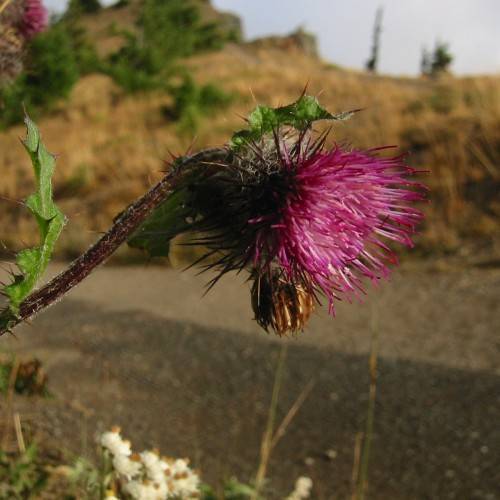
Edible Thistle
Cirsium edule var. macounii
Watering:
Frequent
Hardiness Zone:
Sun:
full sun
Fruits:
Fruits Ready In Fall
Leaf:
Yes
Growth Rate:
Low
Drought Tolerant:
Yes
Salt Tolerant:
Yes
Thorny:
Yes
Invasive:
Yes
Care Level:
Medium
watering
Drummond's Thistle should be watered thoroughly and allowed to dry between waterings. Water every 2 to 3 weeks during periods of active growth, and reduce watering during winter and summer dormancy. Make sure the soil is moist but not soggy; water until it runs out of the drainage holes in the container.
sunlight
Drummond's Thistle prefers full sun; however, it can tolerate some shade. To thrive, it needs 5 to 6 hours of direct sunlight a day, especially during the growing season (May to September). This species should be planted in an open, sunny spot. During the offseason, it's okay to provide slightly less sunlight; however, it's best to keep the plant out of full shade.
pruning
Drummond's Thistle is best pruned right after the main flowering period, or in early summer before the plant starts setting seed. Prune back the dead flower heads to prevent seeding, and avoid pruning any new growth coming from the center of the plant. Pruning the dead flower heads off the plant will also help stimulate new foliage growth and encourage the plant to fill in any bare spots. Avoid removing more than 1-third of the total plant material at once as it can stress the plant. It is best to only prune back stems that are at least 1-third of the size of the main stem.
